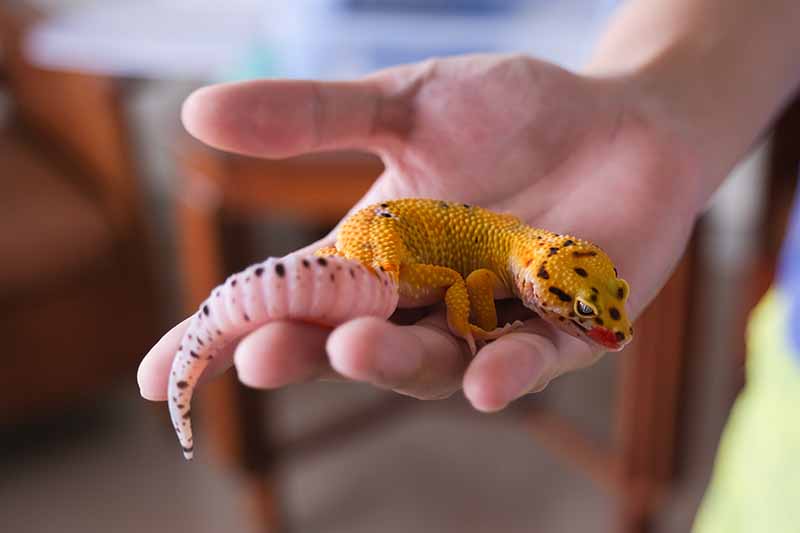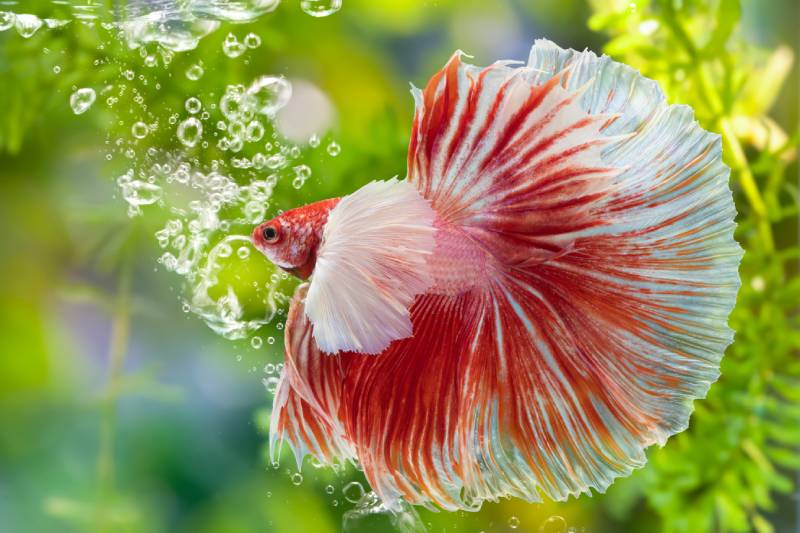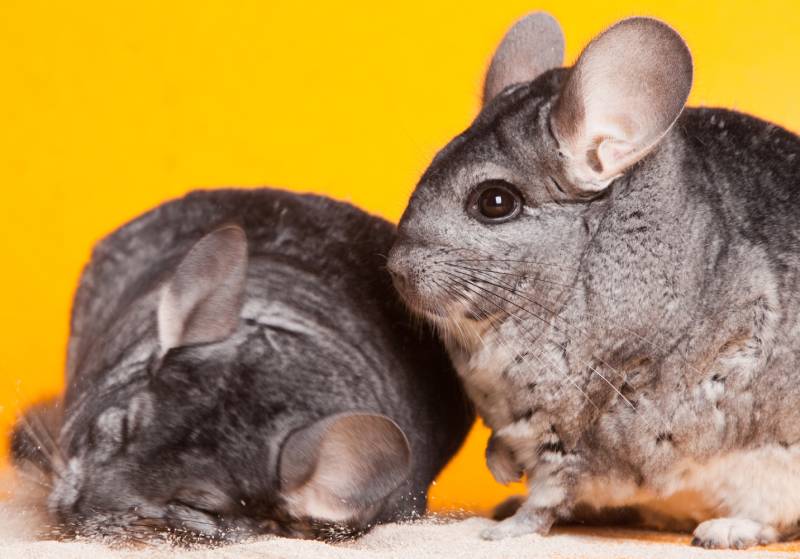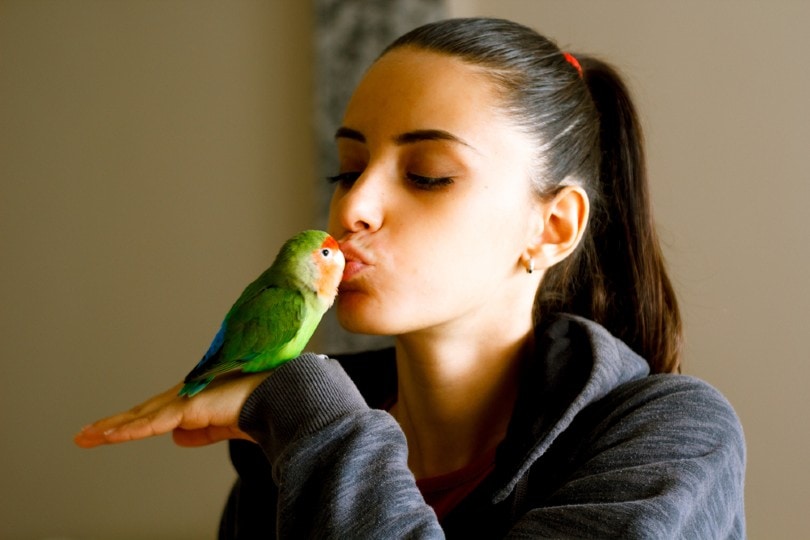Click to Skip Ahead
Giving a dog or cat a reassuring stroke down their back is second nature to most pet owners, but many of us are hesitant to show the same affection to any other animal. Creatures like leopard geckos can feel especially delicate under our hands, and there’s always the fear of causing undue stress.
Do leopard geckos even like it when you pet them? Maybe they don’t adore contact as much as our furrier friends, but under the proper circumstances, they’ll get a positive feeling with a gentle touch on the jaw, head, or back.

Where Do Leopard Geckos Like to Be Petted?
A leopard gecko is generally fine with being petted along the jawline and over the back of the head. Let them see your hands before petting. Trace the jaw lightly with the back of a finger, and stroke your gecko’s head with the pad. You can also pet along their back, moving gently and continuously.
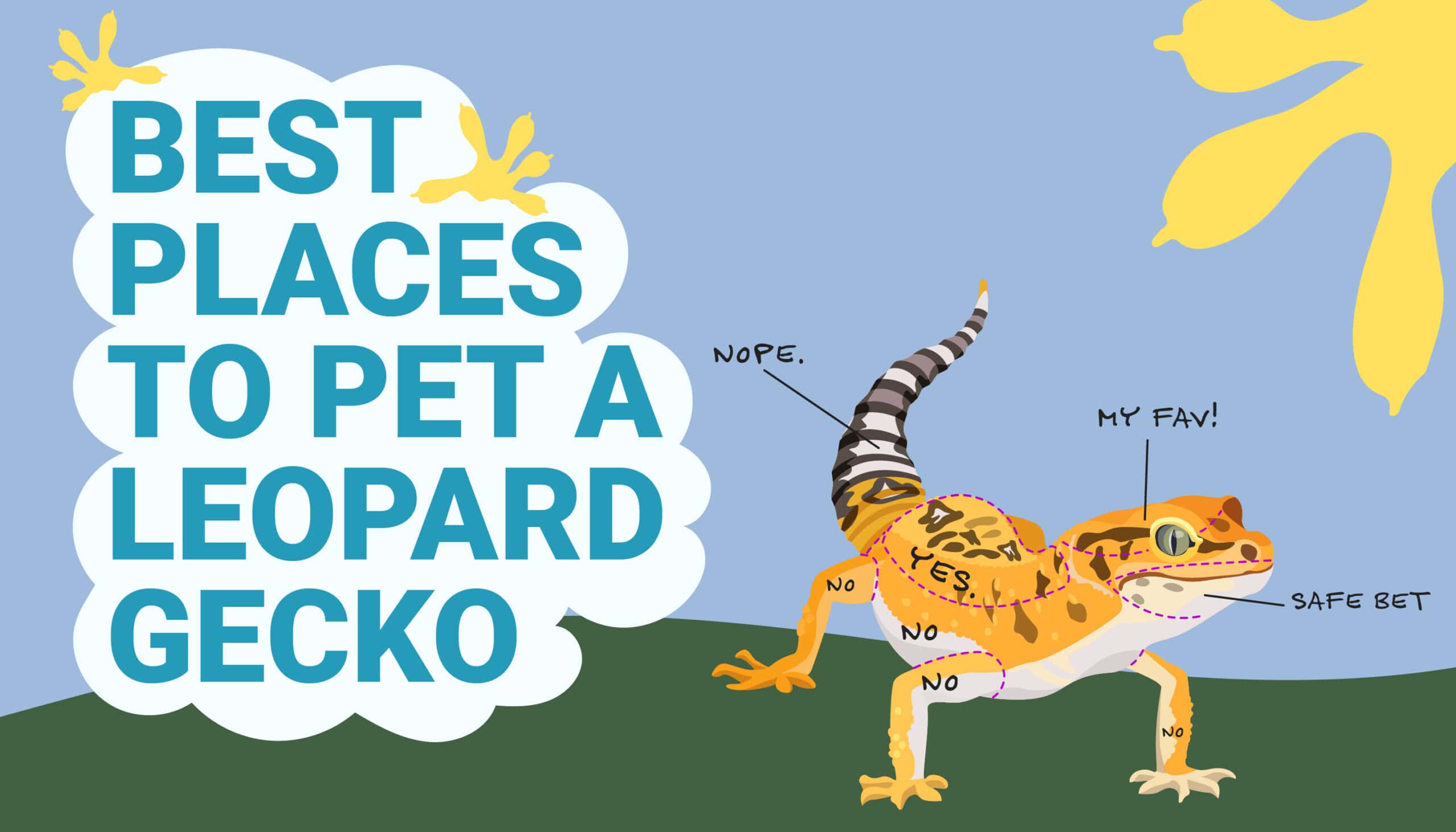
Do Leopard Geckos Like When You Pet Them?
Leopard geckos don’t enjoy petting like cats and dogs, so you can’t dive into handling them as soon as you get one. If you don’t establish a trusting bond, your touch may cause stress, resulting in negative associations that only work against your efforts.
You basically have to train a leopard gecko to allow petting. If you create a strong connection and use positive reinforcement alongside a gentle touch, you can get your leopard gecko to like petting (or at least tolerate it).
What’s the Best Way to Bond With a Leopard Gecko?
Crafting a strong relationship with a leopard gecko takes positive reinforcement. Creating a stress-free area inside and outside the cage is crucial for getting your leopard gecko to respond positively and develop a sense of calm and familiarity in their new environment.
The science shows that the habitat makes a difference with a leopard gecko, particularly concerning temperature, feeding, and enrichment.1 These aspects include puzzle toys, live feeding, thermal gradients, and optimal humidity levels. While these were the most impactful elements in one study, any steps you take to add engaging objects, familiar sights and smells, or a preferable climate can benefit your gecko.
Leopard geckos are ground-dwelling lizards hailing from arid regions in the Middle East. By replicating their natural environment and offering various climbing and digging features, hiding areas, and hang-out spots, you can reduce anxiety and aggression while helping foster your gecko’s positive perception of you.
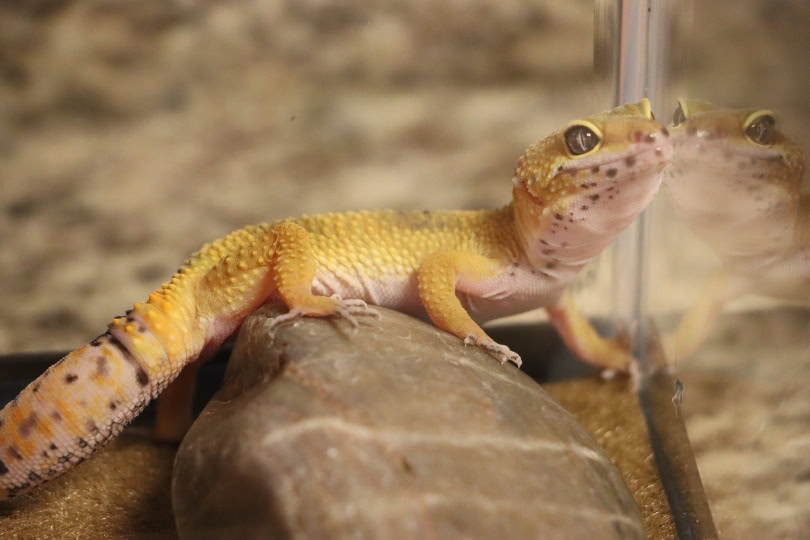

The 7 Tips for Your Leopard Gecko
1. Keep Your Leopard Gecko Separate From Other Pets
Leopard geckos are solitary creatures. Giving them space is ideal unless you’re pairing them with a mate for breeding. That also means keeping them separate from other animals outside the enclosure. Cats, dogs, and other potential threats can be stressful for your gecko, making your bonding more of a challenge.
2. Let Your Leopard Gecko Acclimate
Giving your leopard gecko time to get used to their new home will keep you from looking like a threat. The new environment can be nerve-wracking, so you should give them at least 2–4 weeks to settle in before handling them.
3. Talk to Them in a Soothing Voice
The more your leopard gecko knows you, the more comfortable you can make them. While they will naturally become familiar with your look and smell when you enter the room, your voice is equally important to your identity.
Let them hear you talk in a calm, gentle, and consistent tone during feeding. You can begin to encourage them to come to greet you when you enter and help them de-stress by grounding them with your voice. Even better, associating a unique word or sound with food will create a positive association you can later use to relax your leopard gecko.
4. Pick Them Up Properly
Let your leopard gecko explore your hand before attempting to pick them up. Lay your hand motionless in the tank for them to touch and smell and decide whether to climb into or ignore it. For the first few weeks, only put your hand in to give them food or water, but give your leopard gecko a chance to check it out without forcing it on them.
When they’re ready, lift your leopard gecko by sliding your fingers under their midsection. Do not grab the tail because they could detach it if they feel threatened. Work slowly and carefully, ensuring that you don’t grip your pet. Try to let them get all their feet on you, and don’t pick up your leopard gecko until they’re balanced and sturdy in your hand.
As you lift, use your other hand to cup underneath and support them as they move around. They may move forward quickly, so keep your other hand ready to swoop in and catch them.
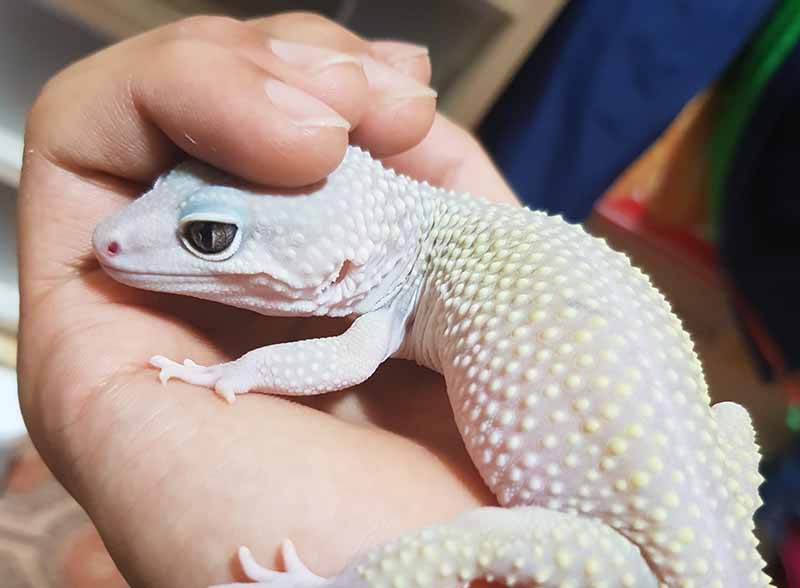
5. Handle Them at the Proper Time
Leopard geckos are crepuscular, which means they are active in their hot, dry habitats during the early morning and evening to beat the harshest heat. You don’t want to handle them when they might be sleeping and need their alone time, even if the middle of the day is more convenient for you.
Shoot for handling them sometime after 6 p.m., when they will be more likely to be cooperative. Make a reliable routine for your gecko, trying to get in at least a few minutes of handling daily. The exception is when they are shedding because they are agitated easily and may feel discomfort during this time.
6. Create Positive Associations
Leopard geckos may not fall in love with you and view you as their protector and companion, but they can at least figure out that your presence is a plus. One of the best ways to succeed is by using food. Although a proper feeding schedule is essential, offering treats while handling your gecko will make the experience enjoyable and one they’ll want to repeat later.
7. Watch for Signs of Stress
As you create your leopard gecko’s environment, care for them, and attempt handling and petting, keep a close eye on signs of stress. Your gecko will communicate their uneasiness and anxiety in several ways, including:
- Running away or moving erratically
- Raising and swinging their tail
- Biting and nipping
- Chirping or hissing
- Breathing rapidly
If they’re making a fuss, put your leopard gecko back in their enclosure and give them space. Never force your attention or interactions, as that can make them warier of you in the future.

Conclusion
Leopard geckos may not be totally indifferent to the action of petting, but you can attach meaning to it that will make it more enjoyable. Bonding is possible with patience and attention. Invest in a proper environment where they can feel relaxed, keep them well-fed, and stay present. Eventually, their comfort with their space will transform into comfort with you, even to the point of eagerly letting you pet them.
Featured Image Credit: Fresh Stocks, Shutterstock
